There’s something incredibly powerful about learning, painting, and growing together, finds this ever-growing group of artists from around the world who encourage each other to explore India’s vibrant artistic heritage, and adapt it to contemporary life. Lakshmi Radhakrishnan, one of the founders of @artisticfolklore on Instagram, gives an overview of the creative collaboration which began in 2020-21 and has now blossomed into a thriving community of more than 150 women artists from around the world
Five years ago, I would not have guessed that a few scattered messages, a shared love of Indian folk art, and admiration for each other’s creativity would grow into something larger than us. What began as an informal exchange of sketches and visual experiments between friends has now taken become a collaborative art page on Instagram. We call it Artistic Folklore, a name that started as a hashtag and ended up defining our creative journey.
I’m Lakshmi Radhakrishnan, born in Kerala, raised in Chennai, and now living in the US. A scientist by profession and an artist by passion, I have always found joy in exploring India’s rich artistic heritage. My co-founder, Aishwarya Magesh, is a fashion designer from Trichy, Tamil Nadu, currently based in the UK. She works as a freelance art educator, conducting workshops for children and vulnerable adults, using creativity as a powerful therapeutic tool to support mental well-being.

captures the grace and rhythm of this Tamil folk tradition with bold lines, symbolic detailing, and a
vibrant cultural spirit.
Our journey with Artistic Folklore began in late 2020 or early 2021, when Aishwarya reached out to me with an idea: to collaborate and explore the diverse traditions of Indian folk art on Instagram. Excited by the possibility, we invited a few like-minded artists to join us on the journey. Our first collaboration was to explore Indian dance forms through the traditional art form, Kalamkari, from Andhra Pradesh. Around 15 artists joined, each depicting a different folk dance in this traditional style. It was a joyful deep dive into both regional art and dance, and from there, our collaborations grew. We began inviting co-hosts who were experts in specific folk arts. Their guidance helped us and our fellow artists – many of whom lacked formal training – create with authenticity, respect and shared purpose.
Jyoti Navin Sharma, a passionate artist and dedicated learner who had the opportunity to train under renowned masters like Alok Raja Sahoo (Odisha’s Pattachitra), Mohan Prajapati and Dhani Ram (Rajasthani Kangra Miniature), and Ajit Dilipbhai Chitara (Mata Ni Pachedi from Gujarat), brought invaluable expertise and warmth to each session she co-hosted with us. She went on to become a permanent host and an integral part of organising and nurturing our growing community.

from Hindu mythology—created as part of their 8 Immortals of Hindu Mythology collaboration.
We created the @artisticfolklore art page as an online gallery to showcase our collaborative works. We plan collaborations six months to a year in advance and cover unique themes ranging from spiritual titles rooted in Hindu mythology to contemporary social and cultural narratives. Open invitations to participate are regularly posted on the page, welcoming new artists from around the world to join our evolving collaborative circle and reach a wider audience through shared storytelling and art.
The group has now blossomed into a thriving community of more than 150 women artists from around the world. Each one brings her special voice and vision to the table, making Artistic Folklore a truly inclusive and ever-evolving canvas, where our collective creativity tells the story of who we are. Our collaborations typically span 10 to 15 days, depending on the number of participants. Each day, two or three artists unveil their work, tagging one another and announcing the line-up for the following day. As hosts, we guide participants in selecting their topics to ensure a rich diversity within the chosen theme. We also provide detailed explanations of both the theme and the art form, allowing everyone to deepen their understanding of India’s cultural richness while engaging in the creative process.
What’s especially rewarding is the spirit of camaraderie that blossoms in each collaboration. Artists openly share not only their creative processes and research but also snippets from their lives, and also often suggest innovative themes. One such collaboration was on The 8 Immortals of Hindu Mythology, a theme which encouraged artists to learn the stories behind these mythical beings and portray them in the intricate Pattachitra style of Odisha.
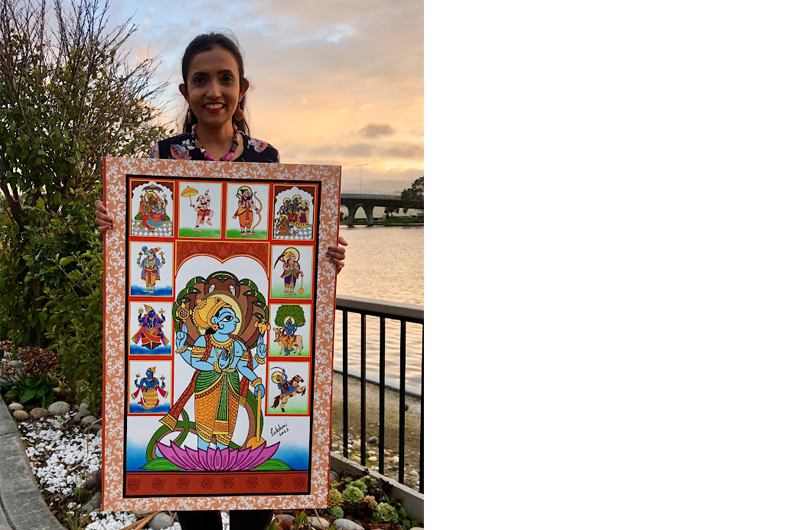
Phad style, a testament to tradition crossing continents.
Another standout was our Dashavatar collaboration in February 2025. Over ten days, more than 80 artists explored the ten avatars of Lord Vishnu, one a day, each choosing their favourite avatar(s) and art style. Similarly, during last year’s Ganesh Chaturthi, our community celebrated the 32 swaroops (divine forms) of Ganesha through the vibrant lens of Bihar’s Mithila painting. We also explored Ganjifa art, a traditional form of hand-painted playing cards, with artists showcasing its regional styles like Mysore, Sawantwadi and Odisha Pattachitra.
Contemporary themes have also been very well received. One of the most playful and creative of these was the recent Phad on Wheels collaboration, where we explored the vibrant Phad artform by depicting a variety of vehicles, ranging from traditional bullock carts and majestic elephant chariots to modern-day tankers, ice cream trucks and even the Vande Bharat train. Artists dove into the collaboration with humour, colour, and imaginationas they experimented with the simple yet expressive style of Phad. The collaboration was a testament to how traditional folk forms can adapt to contemporary narratives, keeping heritage alive while allowing for fresh expression and originality.
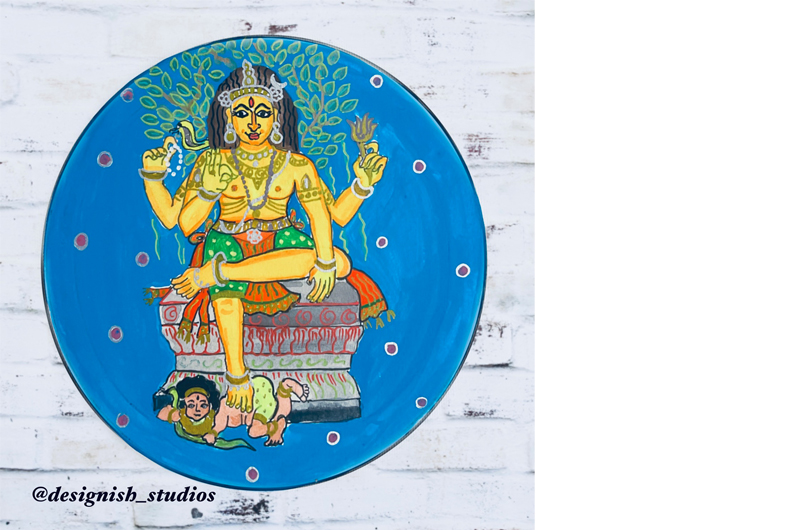
card format, as part of the team’s collaborative celebration of India’s rich Ganjifa heritage.
All our collaborations are entirely free. All we ask in return is a deep love for learning, and a willingness to support fellow artists with kind words and encouragement through comments and engagement. Malini Nair, an artist with a background in IT and commercial art, shared how the platform rekindled her creative spirit. Now in her 50s, she discovered Indian folk art through @artisticfolklore and found both confidence and community. “Art is my way of connecting with people, culture, and emotion,” she says, having since explored Gond, Warli, Kalamkari and Phad.
Anukrati Chauhan, a data engineer from Noida, credits the initiative with broadening her artistic horizons and values our mentoring approach for being both unique and supportive. Sowmya and Ramya, sisters whose livelihood is rooted in folk art, shared how the platform encouraged them to explore lesser-known forms such as Santhal (West Bengal/Bihar), Sohrai (Jharkhand), Chitrakathi (Maharashtra), and Bhil (Madhya Pradesh). “Folk art isn’t about perfection, it’s about expression and connection,” they reflect. For them, Artistic Folklore not only nurtured their creativity but also helped clients engage more deeply with the rustic stories in their work. It gave them the confidence to accept commissions while remaining true to tradition – honouring their ancestors’ legacy through contemporary storytelling.
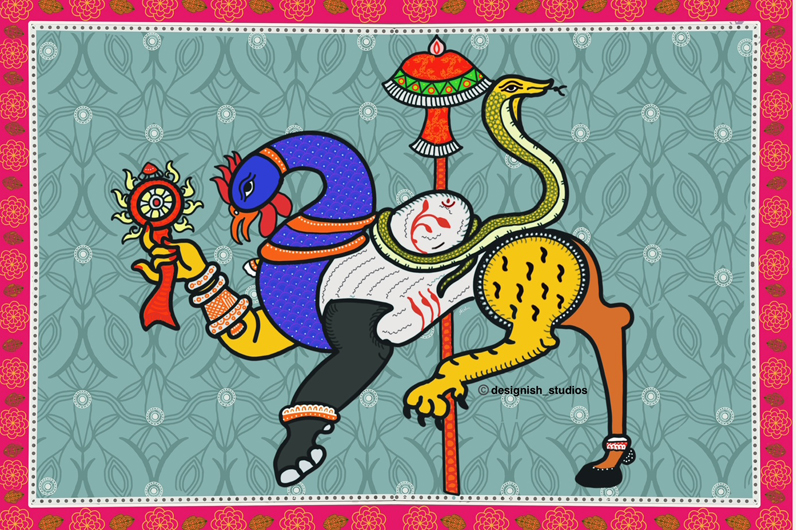
As Artistic Folklore continues to grow, so does our collective dream for what it could become. For instance, Jyoti Navin Sharma proposes, among other initiatives, quarterly or biannual meet-ups where artists can engage with local award-winning artisans, attend workshops, unwind and connect. Aishwarya Magesh looks ahead, imagining a dedicated online marketplace for women artists to showcase and sell their folk-inspired creations with pride and visibility. Indeed, one of the most fulfilling parts of Artistic Folklore is the feeling of not being alone in the act of creation. There’s something incredibly powerful about learning, painting, and growing together.

of global icons and traditional Indian craft.

lotuses—an ode to nature’s grace in the traditional temple art style of Kerala.

temple motifs true to the Odisha folk art legacy.
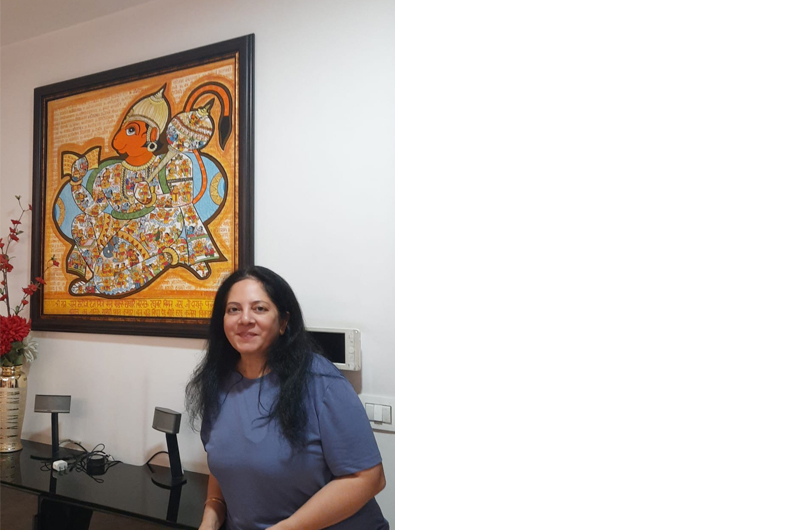
intricate depictions and the handwritten Hanuman Chalisa.


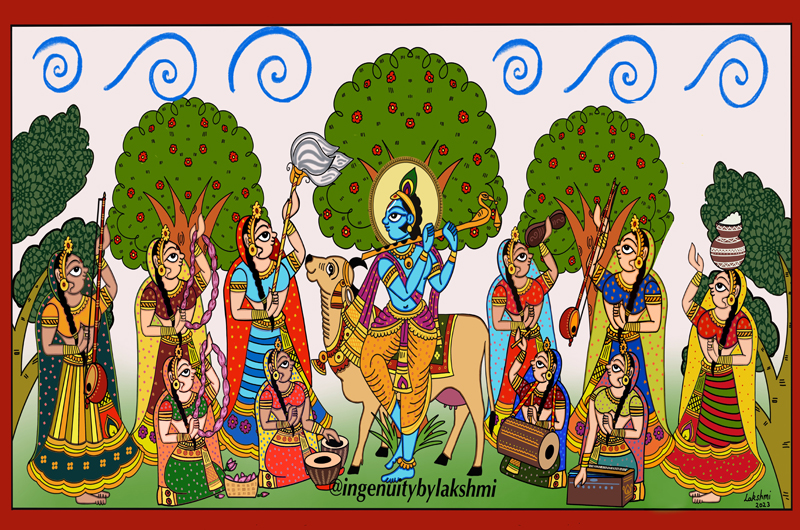
 from Webdoux
from Webdoux